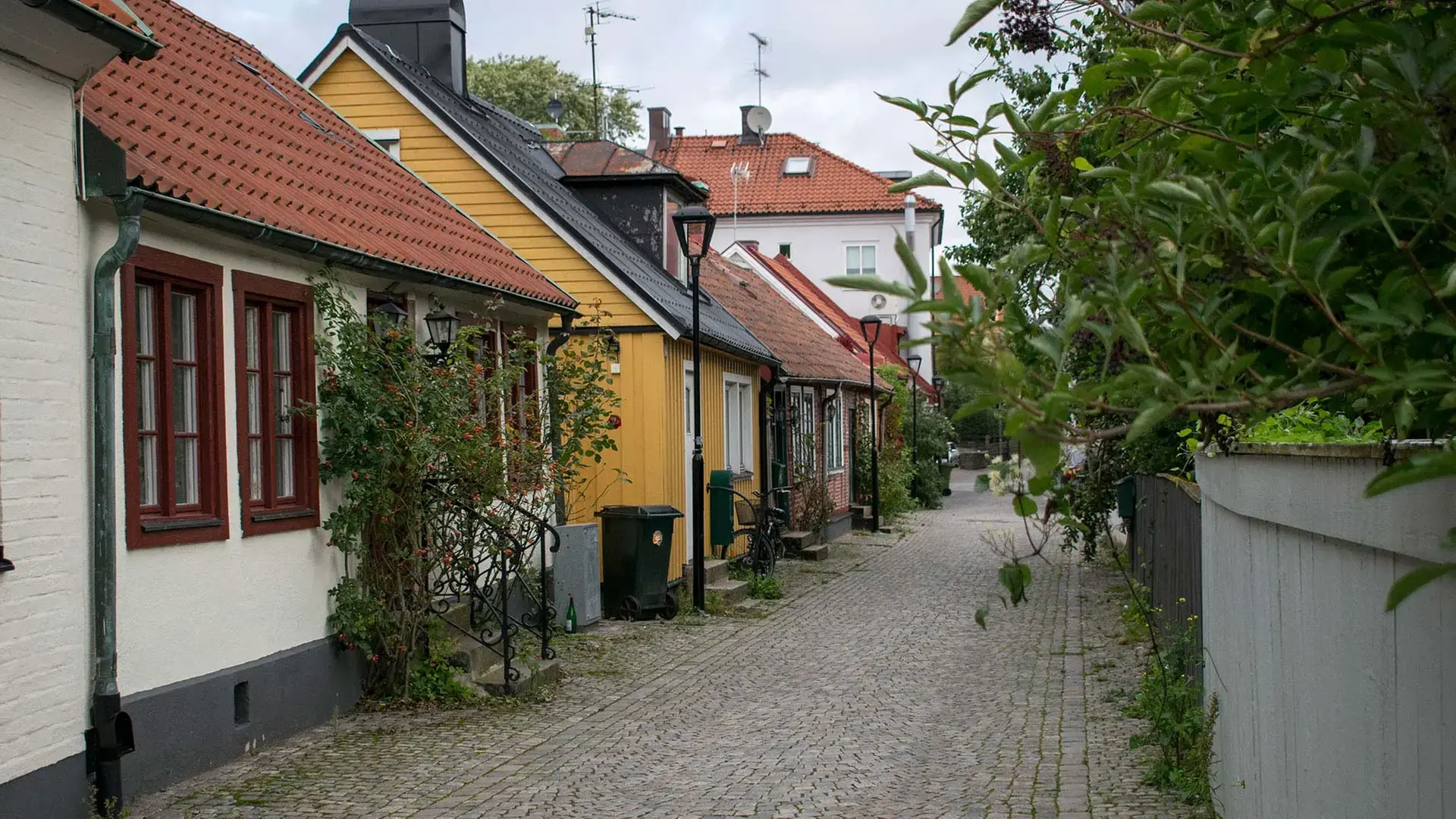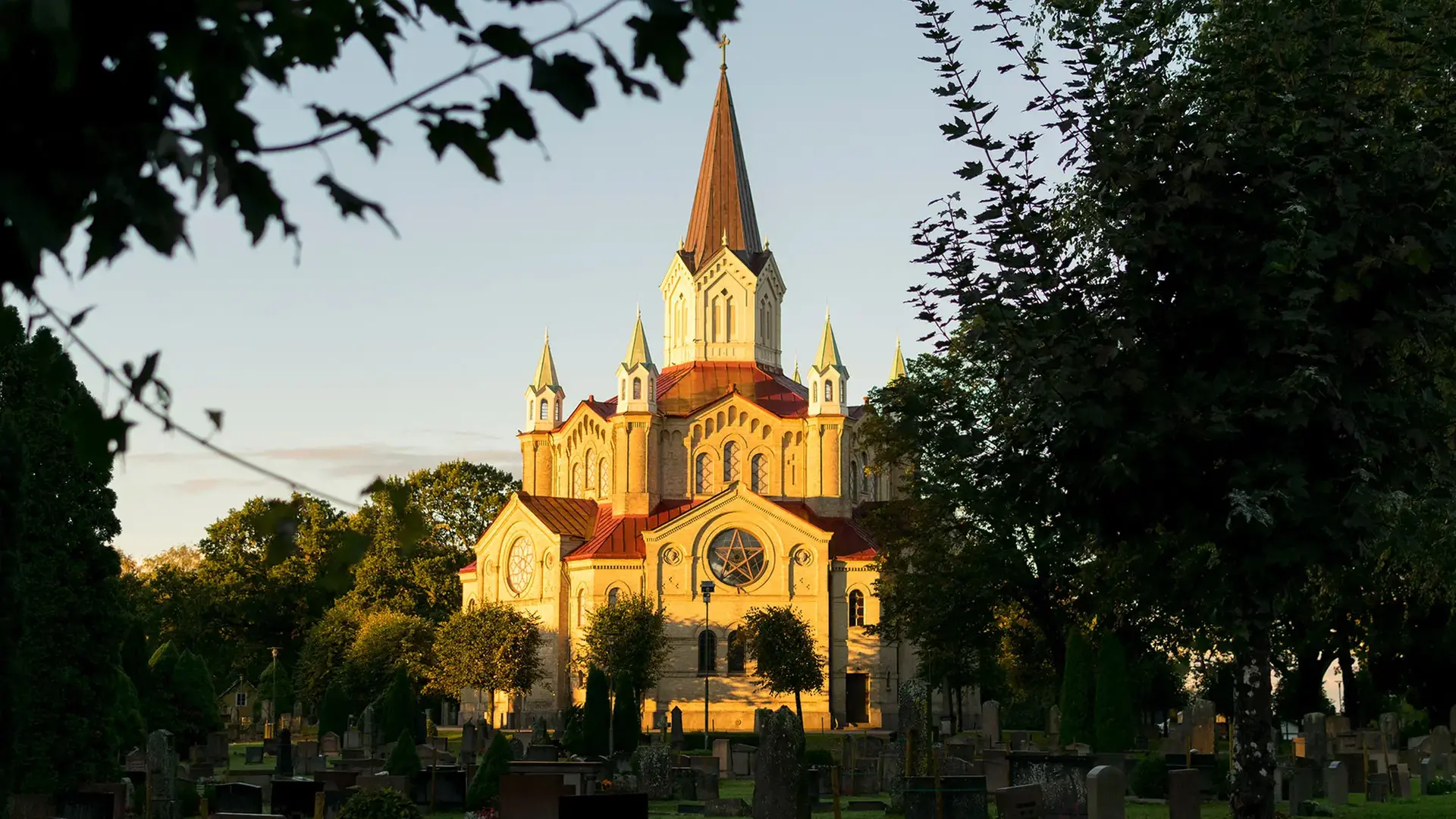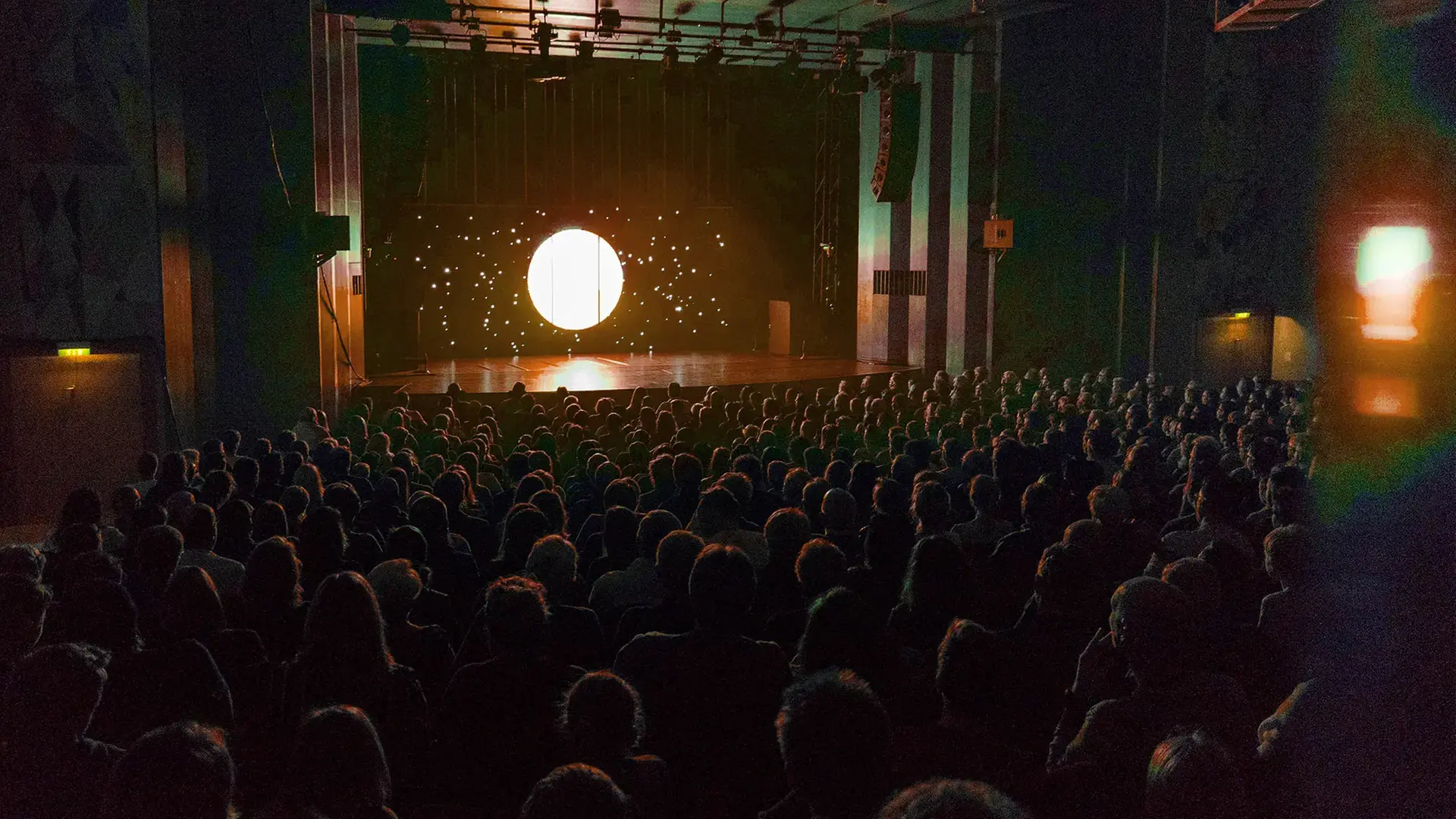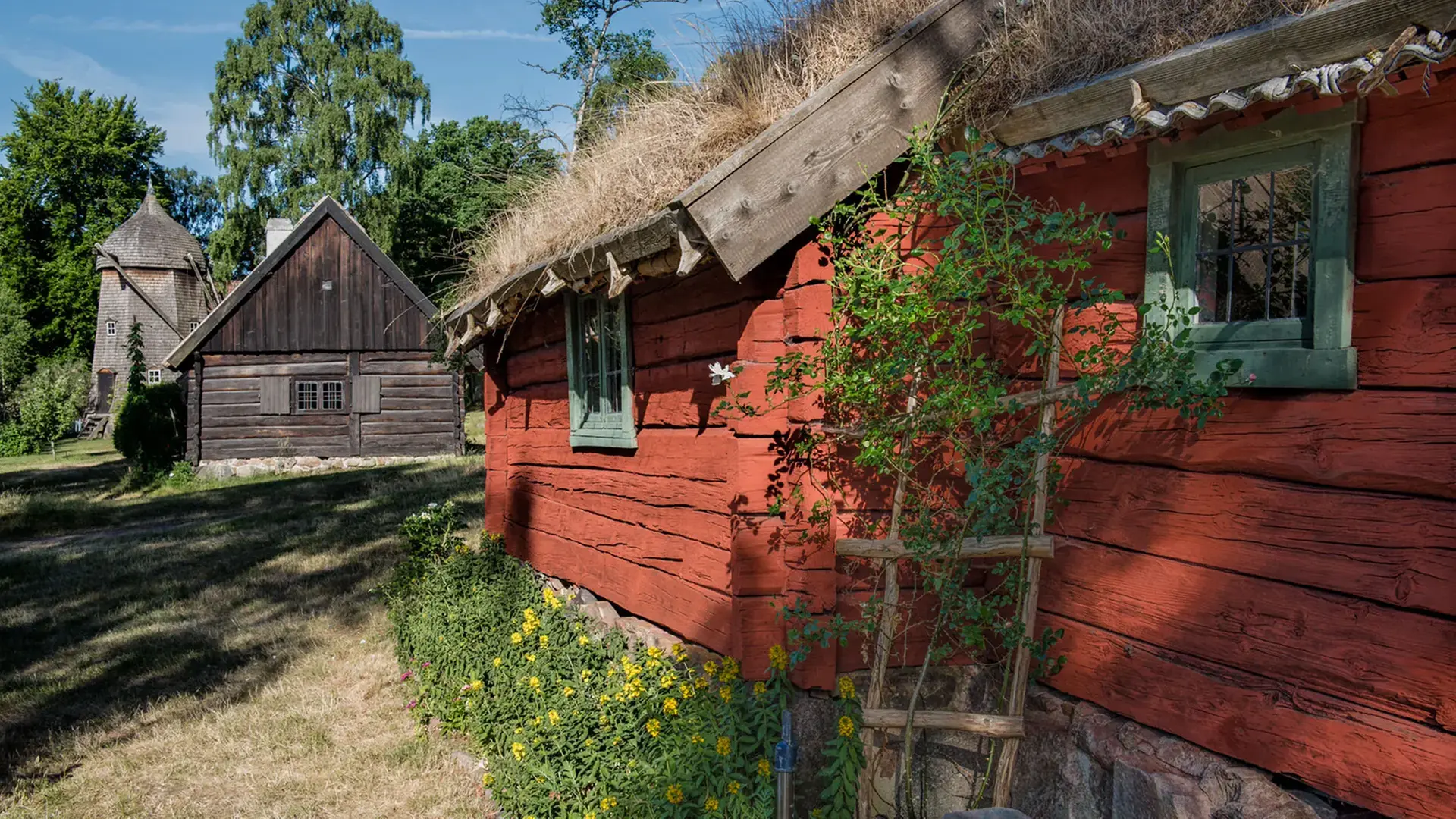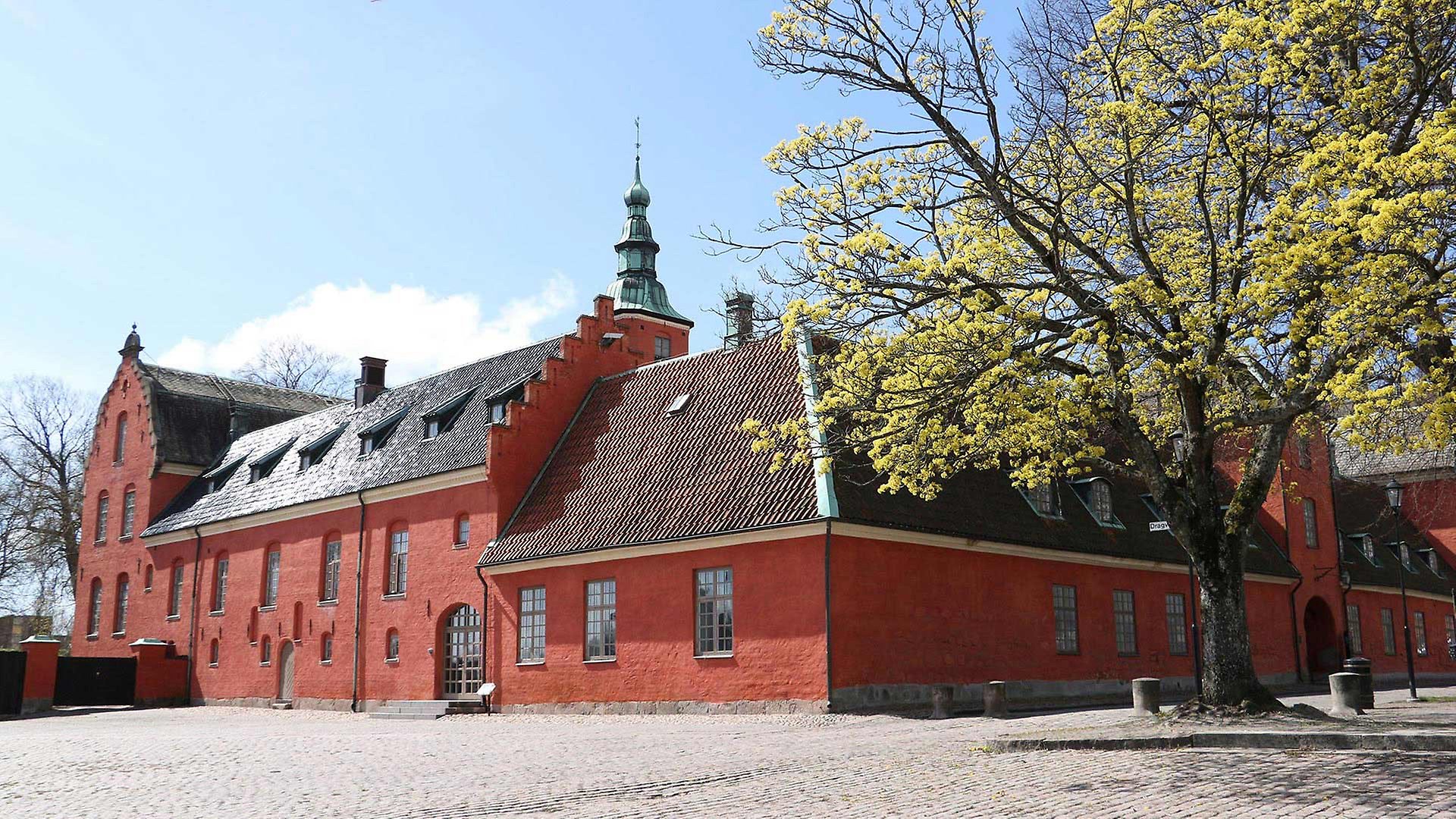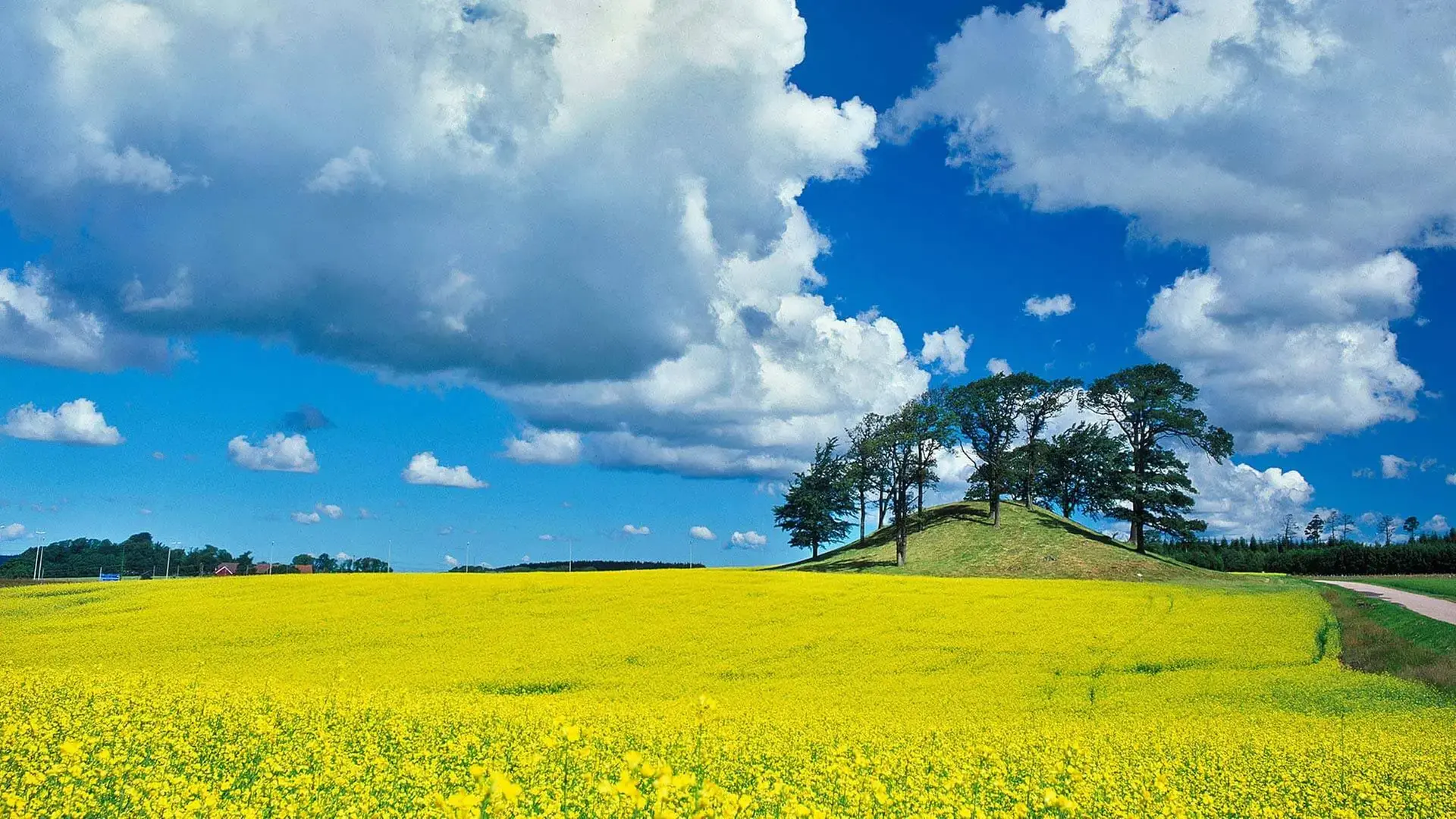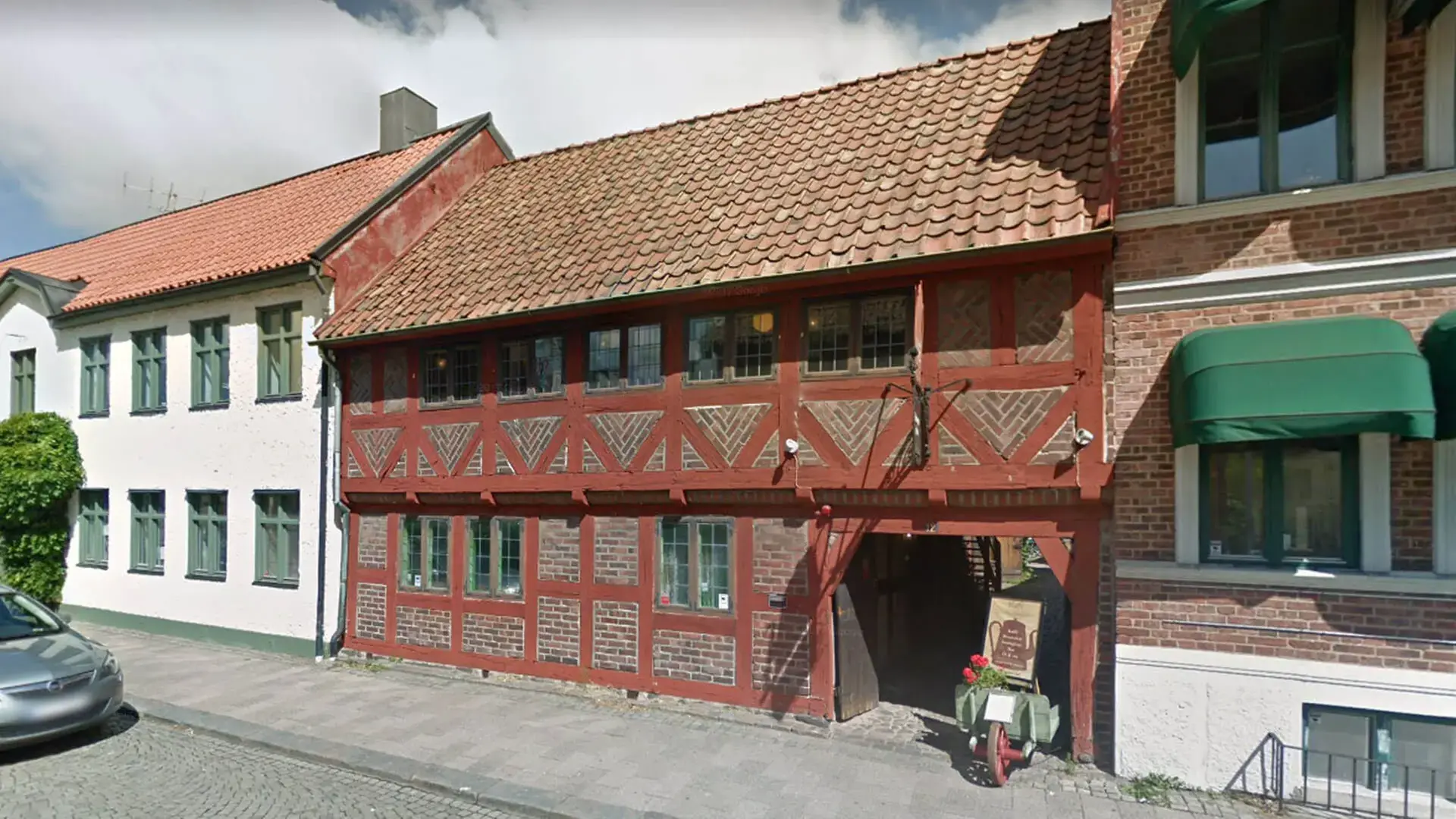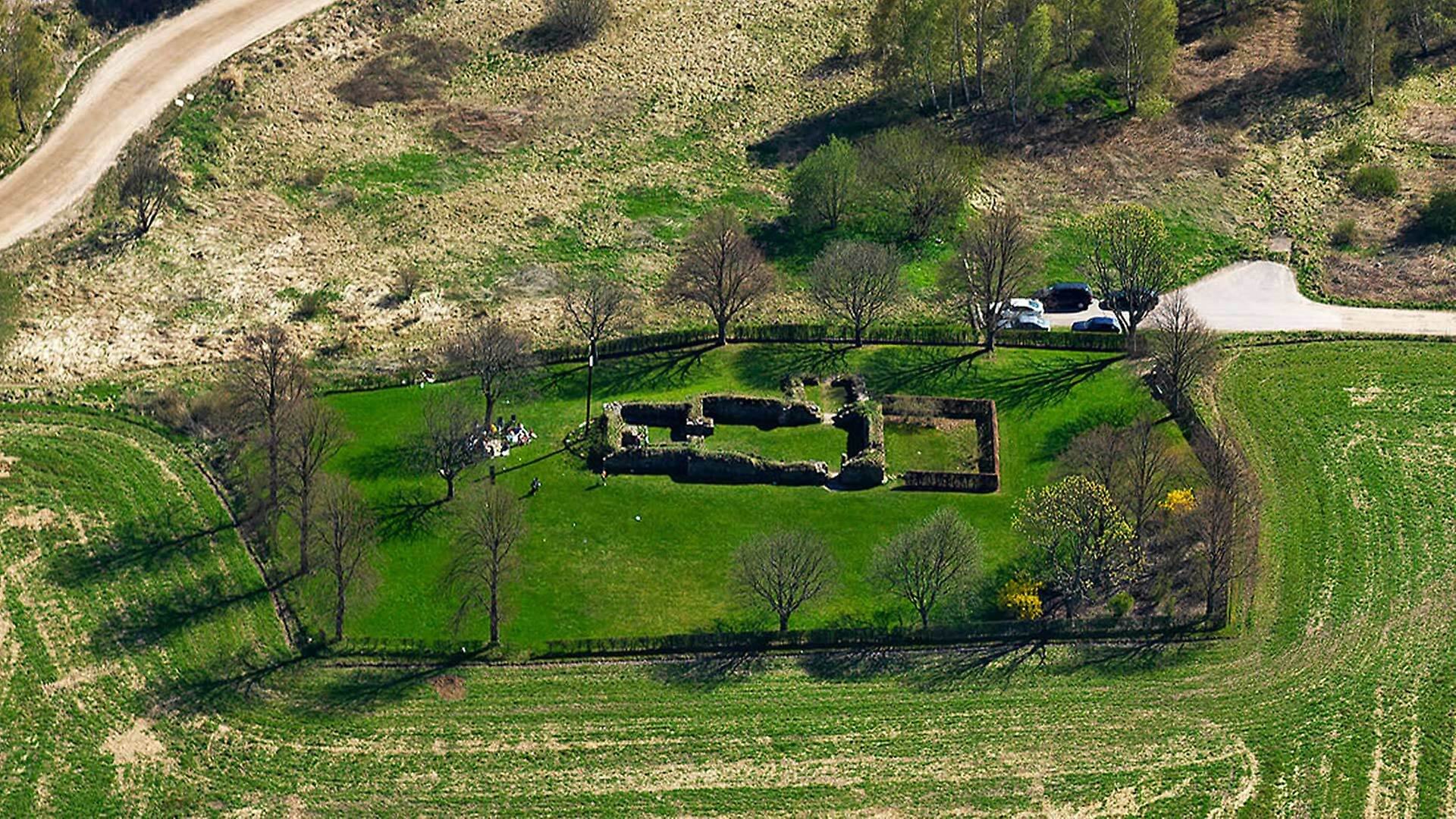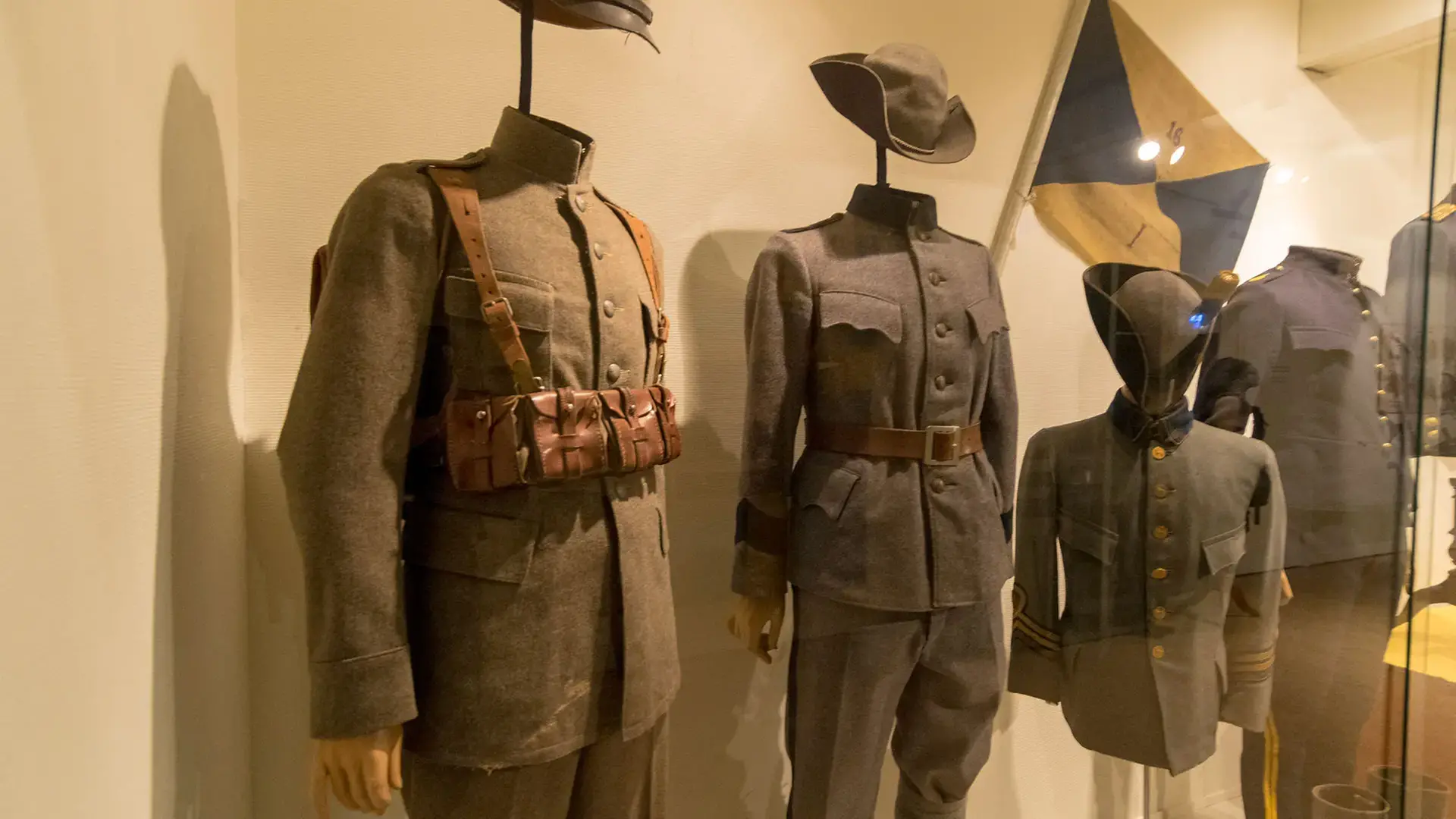- Startsida
- En
- Experience
- Culture and history
- Midsummer in Halmstad
Midsummer in Halmstad
Midsummer is Sweden’s major summer festival. Experience classic, Swedish, Midsummer in Halmstad with songs, dances, herring, potatoes, ice cream and strawberries.
In Sweden, Midsummer Eve is the high point of the celebrations. It is always a Friday between 20 and 26 June. Strawberries and new potatoes are two important ingredients on the midsummer table. You can buy strawberries and new potatoes via several of our farm shops. Or pick yourself at one of the places that offer self-picking. After dancing around the pole and eating your herring, potatoes and strawberries, we recommend going to one of Halmstad’s many beaches. Enjoy a barbecue, the setting sun and an evening dip in the sea.
Classic, Swedish, Midsummer celebrations in Halmstad
Hallandsgården open-air museum
Enjoying the fine views across Halmstad, Midsummer is celebrated traditionally every year at the Hallandsgården open-air museum on Galgberget hill. Accompanied by Halmstad Spelmanslag (a local group of musicians), Folkdansens Vänner (a Halmstad folk dancing organisation) puts on dances around the Midsummer pole. Everyone is welcome to take part.
St. Olof’s Chapel
At Midsummer, St. Olof’s Chapel usually holds a service followed by traditional celebrations with Folkdansens Vänner once again leading the dance.
More midsummer celebrations
For more Midsummer celebration tips, please contact Halmstad Tourist Centre. Celebrations are also listed in our events calendar (swe).
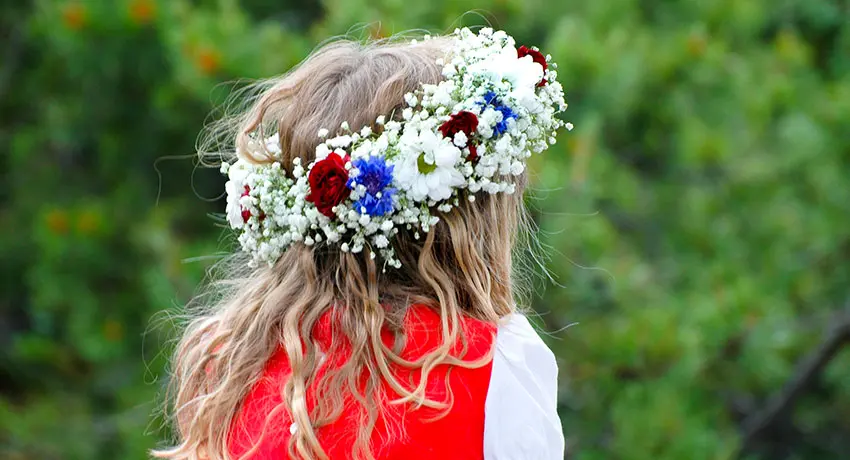
Foto: Tage Persson Mostphotos
A history of Midsummer celebrations
Originally, Midsummer was a religious festival devoted to John the Baptist, whose feast day is 24 June. Since 1952, to fit better into the working week, Midsummer Eve has always been celebrated on a Friday. It is said that Midsummer, or the summer solstice, was also celebrated in pre-Christian Sweden. However, there are no irrefutable sources for this.
Midsummer pole
The prime symbol of the Midsummer festival is the pole, which is also called the maypole. Here, the word “may” does not come from the month but the old Swedish verb “maja”, to decorate. Most probably, the Midsummer pole came to Sweden from Germany in the Middle Ages. Initially, there was great variation in maypoles. Across Sweden, they began to become more uniform from the 1800s onwards. However, there was still some variety.
At the start of the 20th century, it became customary to dance around the Midsummer pole like “young frogs”. This is also when the playing of games as part of the celebrations started.
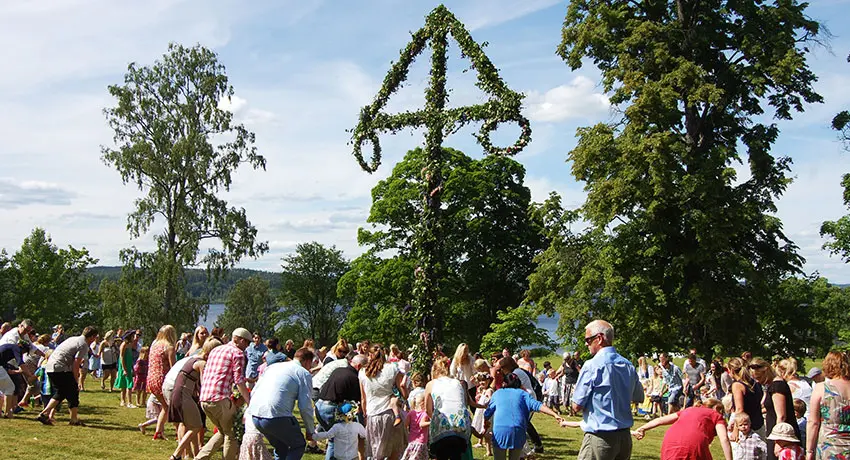
Foto: Jagen51 Mostphotos
Midsummer food
Eggs and pickled herring are served at nearly all Swedish festivals. So too at Midsummer when new potatoes boiled with dill are compulsory along with, of course, strawberries and rich, dairy ice cream. If you are celebrating in the home of a Swedish family, it is certain that you will also be offered a little glass of something spirituous.
Nowadays, other food is often served as a complement to the eggs, herring and potatoes. It is also customary for Swedes to have barbecues on Midsummer Eve.
Midsummer night mysticism
Just like Christmas night, Midsummer night was considered to be full of mysticism. Supernatural beings were also considered to be extra active at this time. Plants had magical powers. Thus, Midsummer night was particularly good for gathering healing plants. It was also good for predicting the future. One way of doing this, which is still practised, is to put seven or nine sorts of flowers under your pillow on Midsummer night. In your dreams, you will then see who you will spend your life with. There are various “rules” for how the flowers are to be gathered. One rule is that the person picking the flowers must do so in silence and, between the picking of each flower, jump over a fence made of horizontal poles.
The Nordic countries
Norway, Denmark and Finland also celebrate Midsummer, albeit in slightly different ways. In Norway, the saintly connection of the celebration is more immediately apparent in the names Jonsok or Sankt Hans (Saint John). Denmark also uses the name Sant Hans. In Finland, it is Juhannus.
Learn more about Swedish Midsummer
At Sweden.com, you can learn more about Swedish Midsummer External link, opens in new window., other celebrations and Swedish culture. One of the site’s features is a film taking you through Midsummer celebrations from morning to evening.
External link, opens in new window., other celebrations and Swedish culture. One of the site’s features is a film taking you through Midsummer celebrations from morning to evening.
More culture and history
-
Museums in Halmstad
In Halmstad there are a number of interesting… -
The 7 Wonders of Halmstad
The world has its seven wonders. And here… -
Centre of Viking culture
700 – 1100. Some 1,000 years ago, Halland… -
The TV Serie "Our Time is Now" – the aunt in the attic
Did you known that Haverdal resident Johan…
More Halmstad
-
Inspiration and guides
Can I bring my dog to Halmstad? No problem!… -
Nature and the outdoor life
Ahh! The Halmstad air! Filled with the tangs… -
Beach and coast
Shimmering sea and colorful sunsets are only… -
Food and drink
Food and drink is not just food and drink.… -
Culture and history
In Halmstad we deliver both culture and history… -
Events
Theatre? Concerts? Art exhibitions? Sport?… -
Spa and wellness
Taking an invigorating dip in the sea, lacing… -
Shopping
Shopping is an experience in itself. Perhaps… -
The Swedish capital of golf
153 golf holes, eight unique resorts in a… -
Good to know
We have gathered together a few practical… -
Accommodation
Where would you like to stay? In a castle… -
Sports and activities
Do you like being active? Raising your pulse,…

